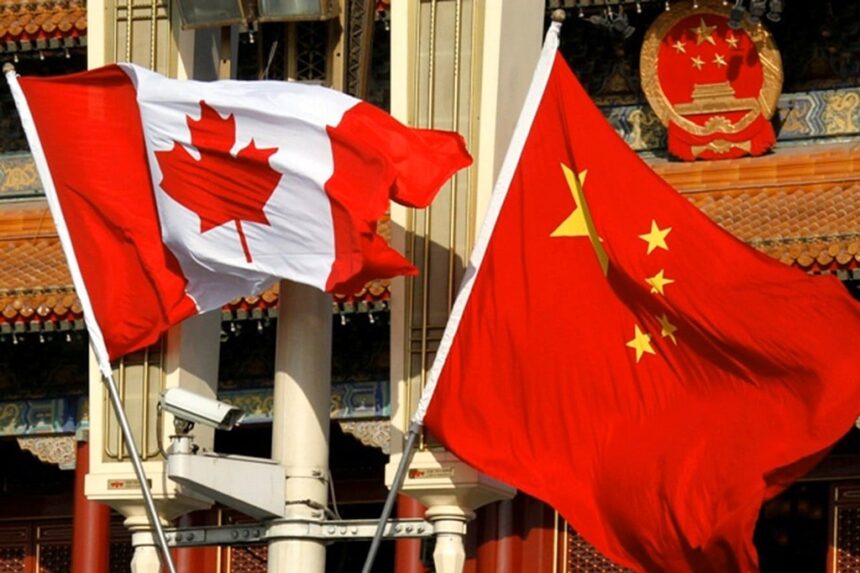Donald Trump’s tariff policies, rolled out again in 2025, have changed the way countries trade. High tariffs now hit Canadian and Mexican imports, making life tougher for Canada’s economy. These measures, part of the “Liberation Day” plan, aim to cut the U.S. trade deficit and support American factories. But the fallout could push Canada to build stronger ties with China, as old trade links with the United States weaken. This shift could reshape relationships in North America.
Since Trump took office again in January 2025, Canadian exports like lumber, steel, and farm goods now face tariffs of up to 25%. These new fees come on top of earlier ones, including a blanket 10% tariff on all imports and sky-high duties on Chinese goods. Canada sends about 75% of its exports to the U.S., so these rules hit hard. The Canadian dollar has dropped. Key Canadian industries such as auto and energy brace for higher costs and less demand.
In response, Canada set its own tariffs on U.S. goods—between 10% and 25% on items like whiskey, yogurt, and steel. While this protects Canadian producers, it also raises the risk of a deeper trade dispute. The World Trade Organization now predicts U.S.-China trade will drop by over 80%, a clear sign of growing separation between major economies. Canada, caught in the middle, faces tough decisions.
Economic Impact at Home
Canada and the United States trade more than $1 trillion every year, so new tariffs have a big effect. Supply chains that cross the border start to break down. Prices for everyday goods go up. The Canadian auto sector, which depends on parts moving back and forth, could see costs rise by as much as 15%. Small businesses, still recovering from the pandemic, feel the squeeze as profit margins shrink.
The Bank of Canada warns that these tariffs could drive consumer prices up by 2-3% on essentials like food and cars by mid-2025. Governor Tiff Macklem has said that U.S. trade policy makes the future less certain for Canada. Meanwhile, Canadian exporters are losing ground in the U.S. market as American buyers look elsewhere. This pressure is forcing Canada to look for new trade partners.
China Steps In
China, also locked in a tariff fight with the U.S., sees a chance to work more closely with Canada. Chinese officials have reached out to Ottawa, offering better access to Chinese consumers. In 2024, Canada shipped $25 billion in goods to China, mostly minerals, wood, and farm products. China is now Canada’s second-largest trade partner, and this relationship could grow if U.S. tariffs stay in place.
President Xi Jinping has called for stronger cooperation and has backed investments in Canadian sectors like clean energy and critical minerals. Chinese firms are putting money into Canadian lithium and rare earth mining—key for electric cars. These moves help Canada’s green energy goals, but they also raise concerns about becoming too dependent on China.
Canada Looks to Asia
With the U.S. raising barriers, Canada is rethinking its global partnerships. The Trudeau government has restarted talks for a Canada-China free trade deal, which had stalled in 2018. This deal could help Canada rely less on the U.S. and open new doors in Asia. China’s Belt and Road Initiative, which funds big infrastructure projects, interests some Canadian officials, especially for Arctic shipping.
But working more closely with China is controversial. Many worry about doing business with a government that does not share Canada’s values. A 2024 Angus Reid poll showed that 55% of Canadians see China in a negative light, mainly due to human rights issues. Still, 62% support more trade with China if it helps balance U.S. tariffs. Economic needs are driving public opinion.
Wider Effects on Relationships
If Canada strengthens its relationship with China, it could change the balance of power in North America. The United States, long Canada’s main ally, could see this as a threat, especially if intelligence-sharing is affected. U.S. officials have already warned that closer ties between Canada and China could hurt shared security.
On the other hand, China gains new influence in North America, which could weaken the U.S. position. Other countries might follow Canada’s lead and work more with Beijing. For Canada, this means more chances to trade but also new risks. Relying too much on China could create problems with NATO allies and the U.S.
Canada’s shift toward China will not be easy. The two countries have very different business rules and standards, making agreement difficult. Security is another concern. Canadian agencies have flagged Chinese cyber threats and called for more careful reviews of Chinese investments.
Economically, China’s own problems could limit how much Canada gains. China’s property market and slower growth are warning signs. Canadian companies looking for deals in China must deal with corruption risks and political fallout. Canada needs to balance new partnerships with keeping its ties to the U.S.
What’s Next?
Trump’s tariffs are meant to help American workers, but they may push Canada to find new partners, especially in Asia. If a Canada-China trade agreement happens, it could change trade routes, energy deals, and diplomatic ties. Still, Canada has to move carefully to avoid upsetting the U.S. or straying from its core values.
The months ahead are important. If the U.S. softens its tariffs, Canada might change course. But with China eager to build closer ties, Canada faces a big choice: stick with its North American partners or join a more global network centered on Asia. The result will shape not just Canadian trade, but also the wider world.








